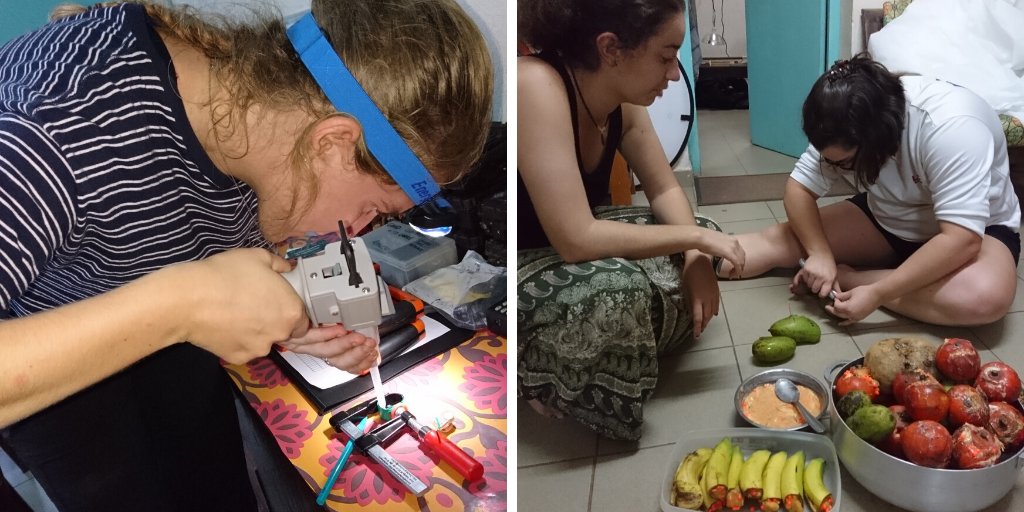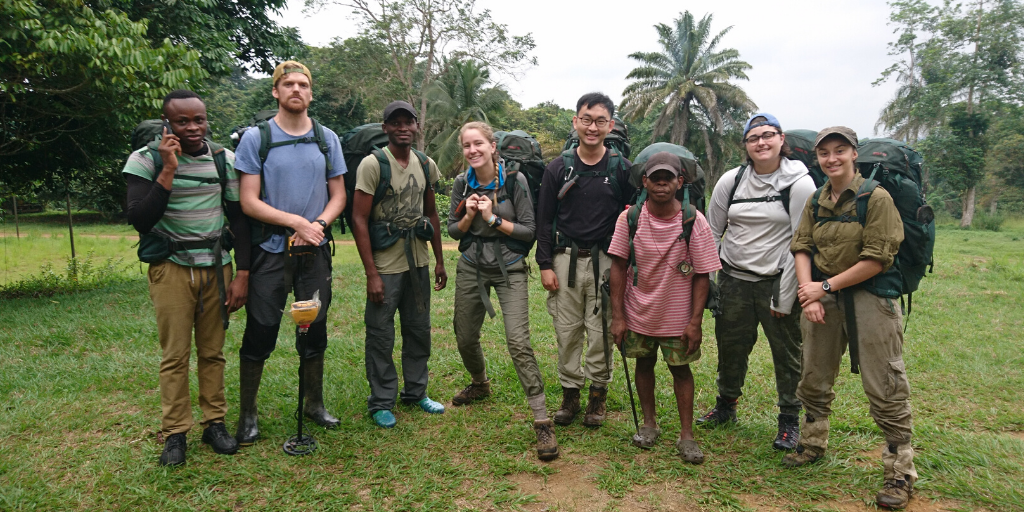Please note: This is an example of a team profile. This and other virtual showcase team profile examples were drawn from information in our annual report and other communications. They have been modified and were not actually authored by these teams.

By: Team Member 1, Team member 2, etc.
African forest elephants are the largest surviving fruit-eating (frugivore) species. Given their size, they consume a greater diversity of seeds than any other vertebrate and are exclusive dispersers for some plant species with larger seeds. They also cross more significant geographical barriers and travel longer distances than most other terrestrial seed dispersers. As a result, African forest elephants play an important role in dispersing seeds across the forest floor through their dung.
However, poaching is rapidly wiping out African forest elephants from most of their historical range, leaving vast areas of elephant-free tropical forest. The reduction of elephant populations will result in dramatic ecological changes in central African forests, including altered species composition, increased stem densities of small trees and lower abundance of large trees. Despite the threat of extinction, African forest elephants remain understudied. We have limited knowledge of their ecological impacts on tropical forests, and most studies of forest elephants have been concentrated in a few protected areas.
Our Bass Connections team deployed a combination of new technologies to measure seed dispersal in the field and model how elephants influence forest composition, diversity and structure through this plant-animal interaction. Patterns of seed dispersal by elephants depend on two key variables: how elephants move and the average amount of time a seed spends in an elephant gut (i.e., gut passage time). Through an ongoing collaboration with the Gabon Parks Agency, Duke researchers had already compiled nearly two years of data on hourly movements of 56 forest elephants. However, there was no existing data on the time it takes a seed to pass through a forest elephant’s gut. Gut passage time affects both the proportion of seeds that germinate and the timing of germination through exposure to the chemical environment of the digestive tract.
To overcome this data gap, our team developed a suite of model seeds including two types of “active” seeds, which indirectly measure gut passage through recording temperature fluctuations, and two types of “passive” seeds, which serve to mark the point of defecation to allow gut passage estimation from time-stamped GPS collar data.

In Summer 2018, we traveled to Gabon and planted these model seeds in fruit and then placed them within the forest. Using GPS tracking, our team then followed elephants after they consumed fruit containing our model seeds and collected the elephant’s dung. Ultimately, the team recovered 845 of our model seeds, all of which were passive. Our team found that the elephant refused to ingest the active seeds, which were larger in size. Since the ‘passive’ seeds cannot log gut passage time in real-time, the team calculated gut passage time using GPS collar data.

Ultimately, our team’s data presents the first-ever data set of gut passage time estimates from wild forest elephants (mean = 65.6 h (min = 16.6 h; max = 113.7 h). The methods we developed are also translatable to other free-ranging, GPS-collared species, and can help inform our understanding of seed dispersal by wild frugivores. Our team submitted a research poster and wrote a paper detailing our findings to Wildlife Biology. We are also working on a second manuscript.

Students Alina Xiao ’21 (Biology) and Anna Nordseth (Ph.D. student in Ecology) traveled to back to Gabon in Summer 2019 to continue tracking gut passage time, identify seed predators and survival rates and evaluate whether elephant dung provides seeds with protection from exposure and predation. Xiao reflected on her summer in Gabon:
At 2:30 a.m., I woke up to the sounds of elephants at the Ipassa Research Station inside Ivindo National Park. I followed the noise of branches breaking to the far side of the porch. There I sat, listened and watched. From just about 10 meters away, I saw the elephants walk across that small patch of grass to re-enter the forest. I watched the dream I had carried for so many years become real right in front of my eyes. Although the actual work and logistics were even more challenging than I expected, this research experience was one of the most exhilarating and fulfilling I have had. –Alina Xiao


